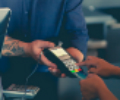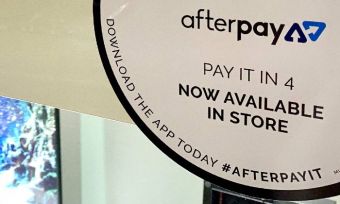Features And Fees Of Online Banking

Co-author: Regina Collins
With daily introductions of many new technologies, it is no surprise that more people are using the internet than ever before.
According to the Canstar Blue 2015 banking survey of more than 3,500 Australian adults, online banking is now used by a staggering 90% of Australian customers, which makes it an essential offering for financial institutions. We go through some of the features and fees of online banking.
What is online banking?
An online banking account is any savings and/or transaction account that allows you to perform your banking activities online via the internet.
An online savings account is a savings account where you manage your funds using the internet and earn interest on the balance. An online savings accounts may be “online only”, meaning you can’t make ATM withdrawals directly from the account or use branch facilities.
Features of online banking
There are a few basic things you should be able to do using online banking:
Internet banking functions accessible in a browser:
- Make a wide range of transactions and payments
- Create reports or e-statements for your account
- Use self-help education and tools as needed
- Contact banking institution using online or email customer service
- Find your nearest ATM or branch using online location services
Mobile banking functions accessible in an app:
- Make transactions and payments
- Make contactless payments in person using phone app instead of card
- Get account information
- Transfer money between your accounts
- Access your transaction history
- Calculators for home loan repayments, currency conversion, and share trading
- Contact form through app
- Apply for other banking products through the app
- Find your nearest ATM using app location services
Common fees charged on online savings and transaction accounts
A combined online savings and transaction account may well have some fees because of the ability to make many transactions. Some of the more common fees may include:

|
Stay “MoneySmart”
The Australia Securities and Investments Commission (ASIC) have put together some of their top tips on protecting your money and your personal details online.
- Keep your password safe: If you keep records of your online banking login name and password, keep them separate from each other. Never keep them with your computer or mobile phone. Also, have a password for your computer as extra protection.
- Keep your computer and mobile phone secure: Use a secure computer and a secure network. If you don’t, your banking details and personal information can get stolen. Public computers and public networks are not secure. Always make sure you log off when you’ve finished your online banking.
- Record receipt numbers: Your receipt is your proof that you have transferred money online from one account to another (e.g. your bank account to someone else’s bank account). It’s best to print the receipt (on paper or as a pdf) or at least write down the receipt number. If something goes wrong (e.g. if you transfer money to the wrong account), this proof can be important.
- Watch out for fake bank emails (phishing): Phishing scams are a way of stealing your financial and personal details so scammers can clear out your bank account, which, in turn, can lead to identity theft. Scammers send fake emails or texts and pretend to be from a bank or other financial organisation. An easy way around phishing is to never click through to the website via the email link – always ensure you open a new tab and type the website in manually just to be safe.
Case Study:
 Gus received an email that looked like it was from a well-known hamburger chain. It invited him to earn $50 by completing a survey. Gus clicked the email link. This was his first mistake. He then gave the scammer some of his personal details. Gus got another email asking for his bank account details so he could be sent the $50. Gus sent them his bank account details. That was his second mistake. The scammers now had enough information to take money from his account.
Gus received an email that looked like it was from a well-known hamburger chain. It invited him to earn $50 by completing a survey. Gus clicked the email link. This was his first mistake. He then gave the scammer some of his personal details. Gus got another email asking for his bank account details so he could be sent the $50. Gus sent them his bank account details. That was his second mistake. The scammers now had enough information to take money from his account.
Gus lost a lot more than $50 before he realised what was happening. Plus, the scammers now had personal information for identity theft. Gus called his bank to let them know his bank account details had been given to a scammer.
Now Gus knows never to provide his bank account details to unknown organisations and to always to be very careful about providing his personal information.
Compare online banking providers with Canstar
When it comes to online banking providers, it’s important to know you’ve chosen a policy to suit your particular needs. Fortunately for you, we have compared over 50+ online banking providers and done the hard work for you. Compare online banking with Canstar today!






